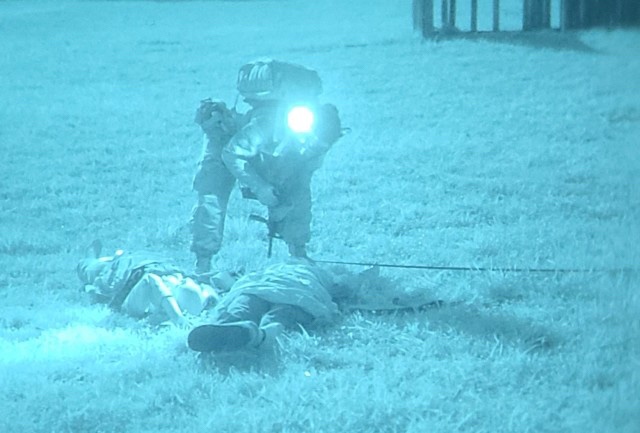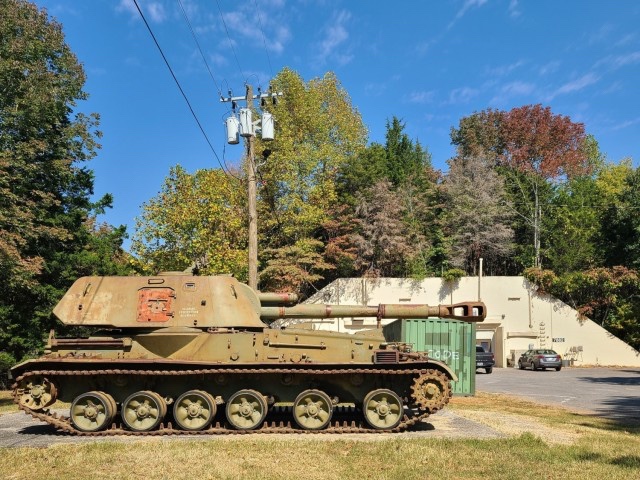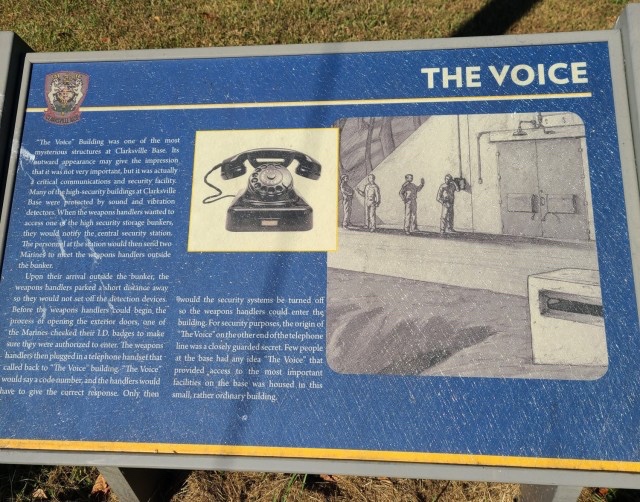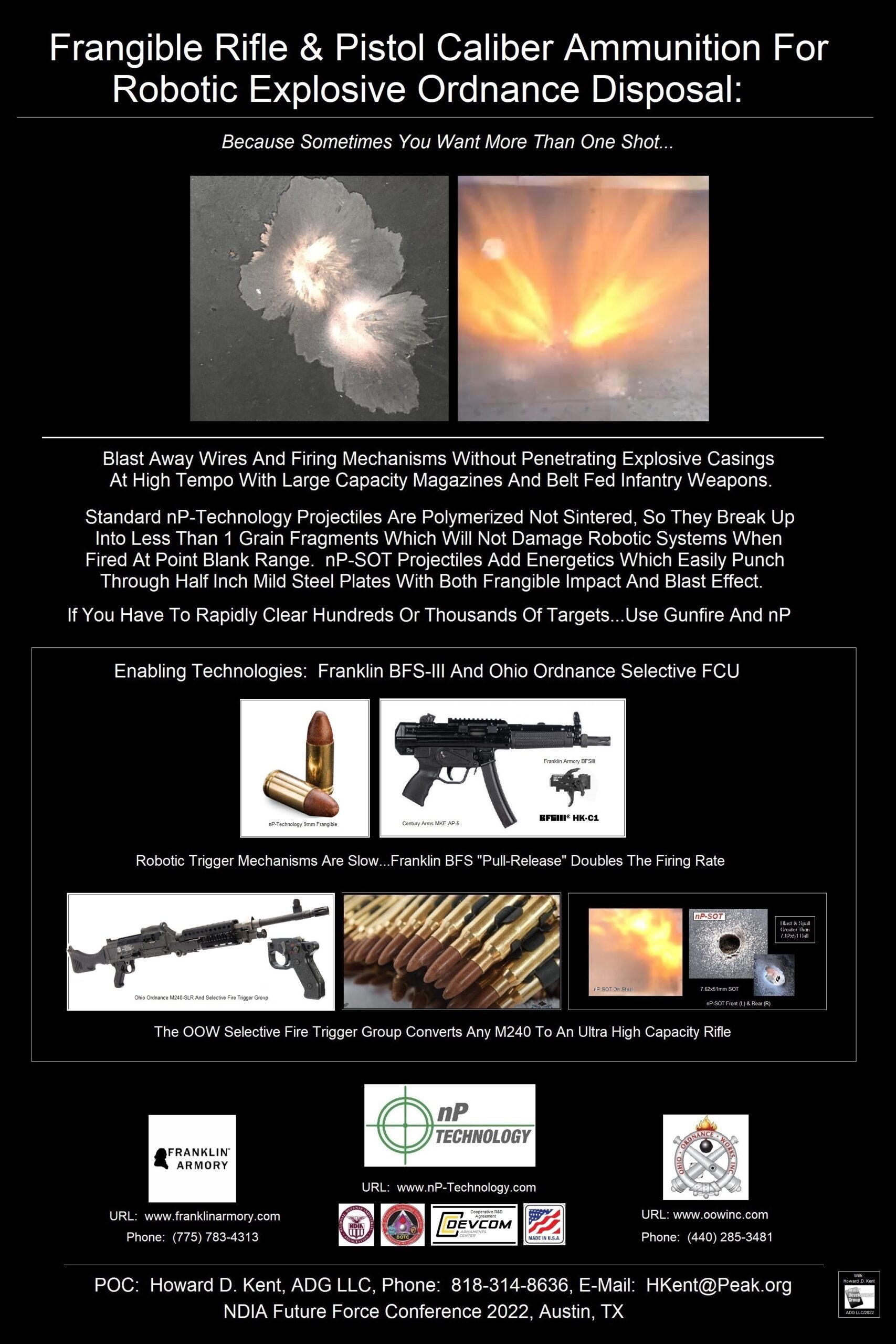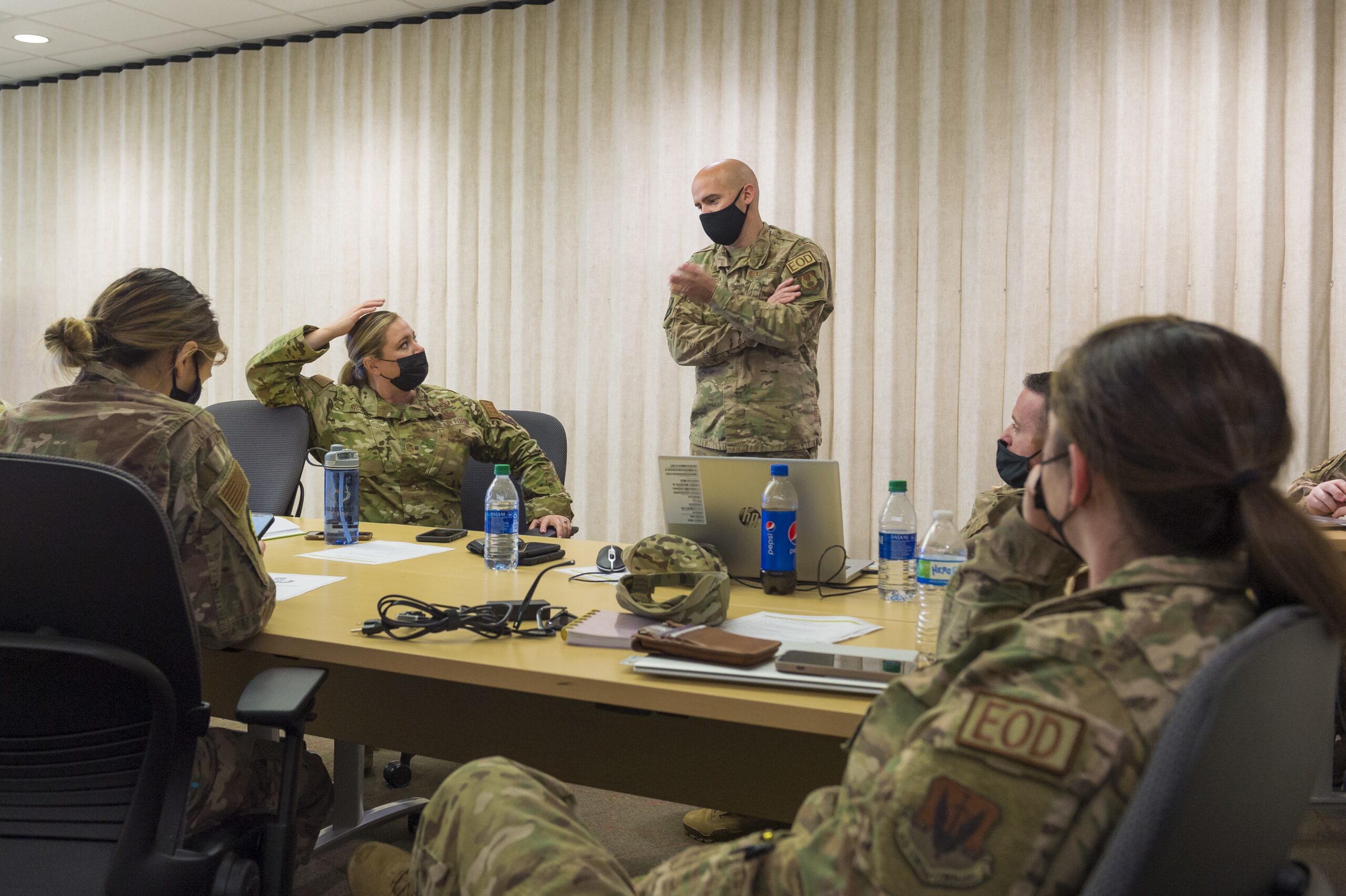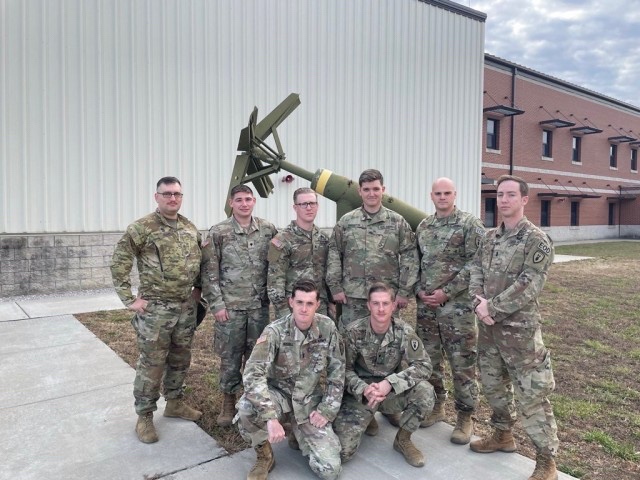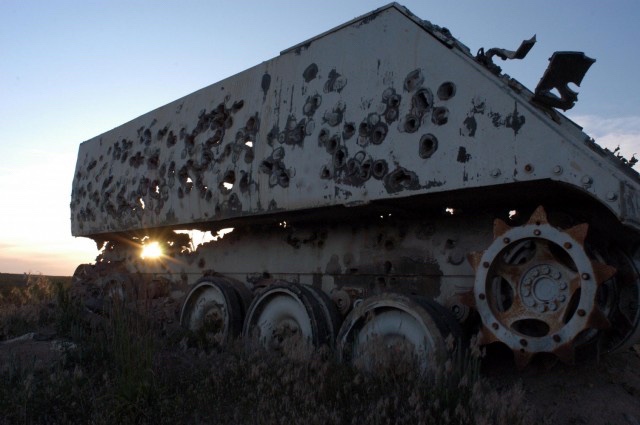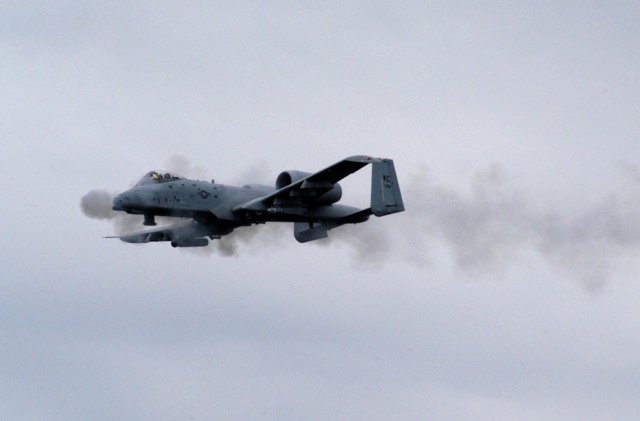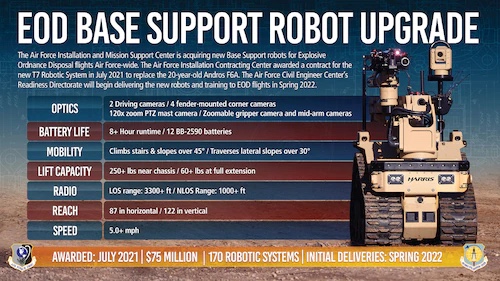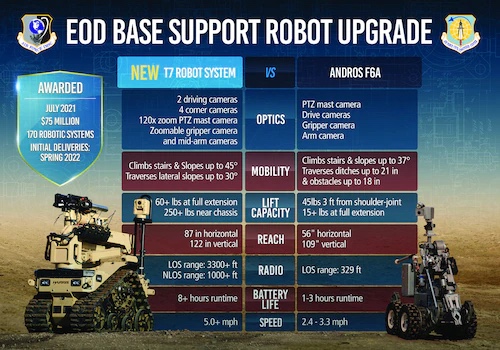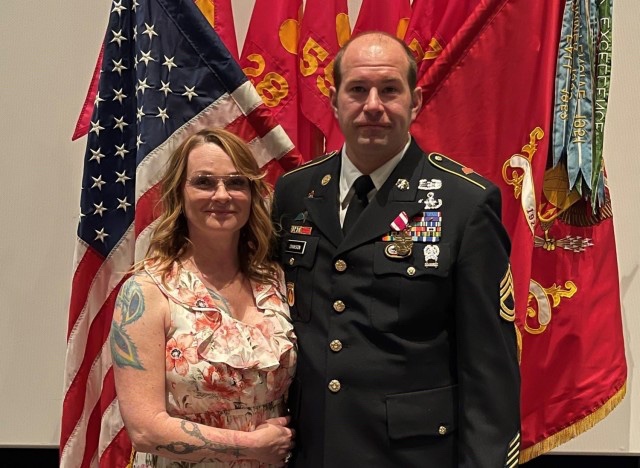
FORT BRAGG, N.C. — The most highly decorated explosive ordnance disposal, or EOD, technician in the history of an elite U.S. Army airborne EOD company recently retired after recovering from a combat-related gunshot wound that paralyzed him from the chest down.
Sgt. 1st Class Jeffery M. Dawson completed his legendary career with the 28th Ordnance Company (EOD), the Army’s only Special Operations-focused EOD company with handpicked and highly trained EOD Soldiers who support direct action missions around the world.
The Fort Bragg, North Carolina-based 28th EOD Company (Airborne) is part of the 192nd EOD Battalion, 52nd EOD Group and 20th Chemical, Biological, Radiological, Nuclear, Explosives (CBRNE) Command, the U.S. military’s premier all hazards formation.
In an Army EOD community first, 75th Ranger Regiment Commander Col. Jim “JD” Kiersey and Command Sgt. Maj. Curt D. Donaldson attended his ceremony and upgraded Dawson’s status from an “honorary member” to a “distinguished member” of the Ranger Regiment.
Part of U.S. Army Special Operations Command, the 75th Ranger Regiment is the U.S. Army’s premier direct action light infantry force. The regiment can deploy one Ranger Battalion to hotspots around the world within 18 hours of notification.

A seasoned combat veteran who is originally from Coalville, Utah, Dawson deployed to Iraq with the 722nd EOD Company before being selected for the 28th EOD Company. During his six years with the 28th EOD Company, Dawson deployed to Afghanistan seven times.
Dawson said EOD technicians safeguarded forces and enabled operations during the Global War on Terror by confronting and defeating the enemy’s preferred weapon — the improvised explosive device. EOD forces have rendered safe more than 100,000 improvised explosive devices in Iraq and Afghanistan since 2006 and have trained thousands of host nation forces.
“During the Global War on Terror, IEDs and other complex explosive devices were at an all-time high. Many maneuver elements relied heavily on the skill and competency of EOD technicians. Not just from the Army but all services. Often times, the elements would embed EOD as an organic asset,” said Dawson. “I often overheard many members of the elements we’ve supported say that they would never go outside of the wire without EOD on the manifest. That’s what makes EOD techs so important to the military.”
During his career, Dawson defeated hundreds of explosive devices and earned the Purple Heart for combat injuries twice.
“As an EOD tech, the most memorable missions stand out because they were either really good or really bad,” said Dawson. “Working with special operations forces, you often find yourself in situations where the outcome can sway in either direction in a moment’s notice.”
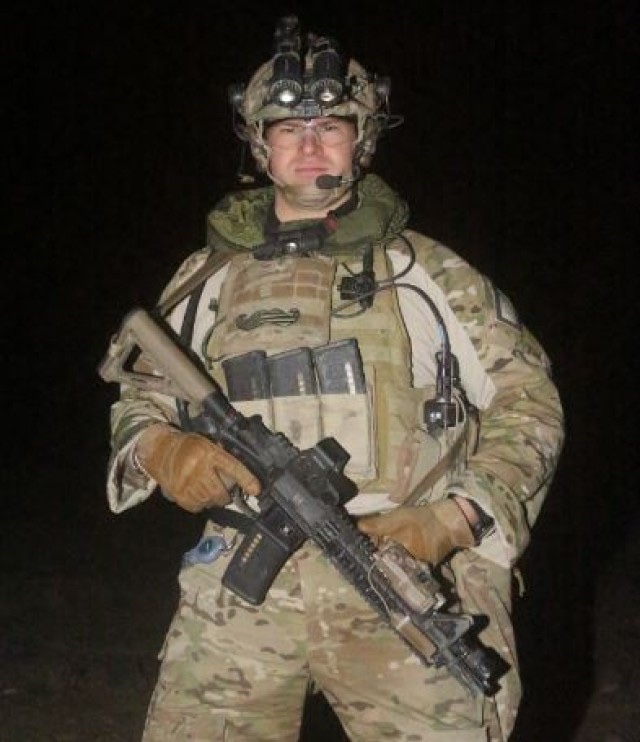
The missions that stand out the most for Dawson are the one where he earned the nation’s second highest military medal, the Distinguished Service Cross, and the mission that nearly ended his life and left him paralyzed from the chest down.
In Afghanistan on Oct. 5, 2013, Dawson participated in a mission to capture or kill a high value Taliban leader who was planning terror attacks.
“The IED threat was low and it was supposed to be a quick easy target,” Dawson said. “Upon infiltration everything changed in minutes.”
A fleeing insurgent detonated an explosive and killed a team member and the team’s multi-purpose canine, Jani.
Dawson soon realized that his team was surrounded by pressure plate IEDs. He halted the mission, located the improvised explosive devices and aided in the evacuation of dead and wounded Soldiers. Four U.S. Soldiers were killed by explosive devices during the mission.
Although seriously injured during two different explosions, Dawson worked in limited visibility to locate three confirmed pressure plate IEDs and six additional suspected devices. He then cleared a path to evacuate the fallen and wounded Soldiers.
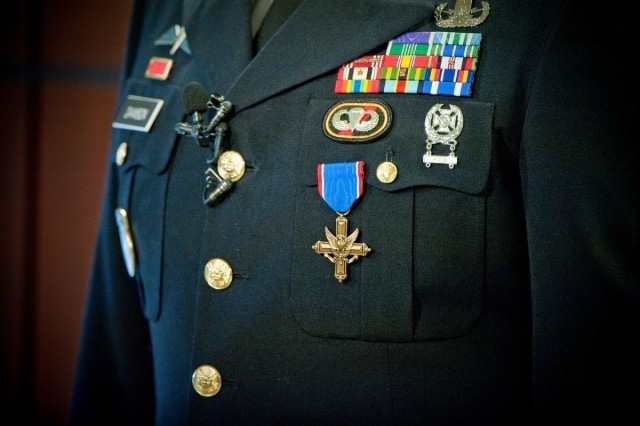
On Feb. 17, 2015, then-Army Vice Chief of Staff Gen. Daniel B. Allyn presented the Distinguished Service Cross to Dawson during a ceremony on Fort Benning, Georgia. Sgt. Bryan C. Anderson, the Ranger Platoon medic on the same mission, also received the Distinguished Service Cross during the ceremony. The 75th Ranger Regiment submitted them for the award.
On another mission in Afghanistan in July 2019, Dawson was shot and seriously wounded.
“When I was shot, it came in my right arm and came to rest upon impacting and fracturing my left shoulder blade, collapsing both lungs and exposing my spinal cord in the process,” said Dawson. “I’m thankful for the expertise of the medic that performed life-saving treatment which allowed me the opportunity to live despite all odds.”
The medic saved Dawson by using a chest tube to inflate his collapsing lungs.
Dawson was medically evacuated to Germany for surgery and then to Walter Reed National Military Medical Center in Bethesda, Maryland. He moved next to James A. Haley Veterans Hospital in Tampa, Florida, a facility that specializes in spinal injuries.
Working with physical therapists and using the tough and tenacious “never quit” approach that made him successful on the battlefield, Dawson stood again and then he walked again.
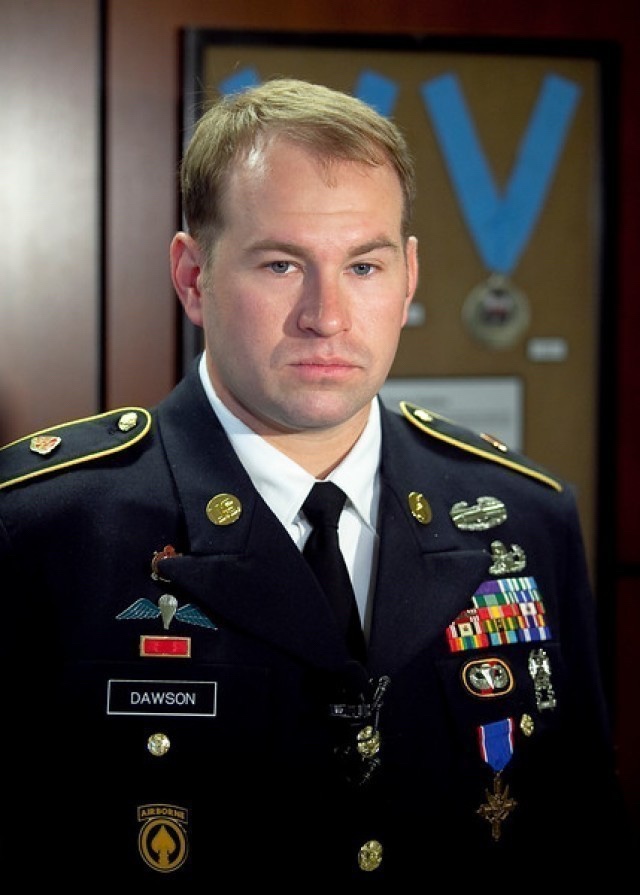
Less than a year after being severely wounded, Dawson took on 5K and walked 3.1 miles unassisted. Since then, he has completed a 6.2-mile walk and a triathlon with a quarter-mile swim, 11-mile bike ride and 3.1 mile walk without assistive devices.
“The key to my recovery was mostly mental,” said Dawson. “I lost control of everything from the chest down, with that I lost any physical conditioning prior to my injury. I essentially had to start over as a newborn in a 33-year-old man’s body.
“Since I am still trying to relearn everything, I have to keep a positive mental attitude so I can continue to progress,” said Dawson.
After returning home to North Carolina, Dawson has taken time to focus on healing the visible and invisible scars from multiple combat missions. “I still remain active as much as I can,” said Dawson. “I enjoy hunting, fishing, hiking and other outdoor activities that get my heart pumping. In the future, I would like to complete a mud run.”
He has enrolled in college and he is looking for opportunities to help other veterans.
Dawson said the highlight of his career was being recognized by the 75th Ranger Regiment for actions on the battlefield.
“I was surrounded by people who wanted to be there,” said Dawson. “It has been an honor working with the 75th Ranger Regiment. Their expertise and professionalism set the standard for others to look up to.
“What makes the 28th a great company is that it is filled with specially selected and well trained Soldiers who will never accept defeat and never fail to complete the mission. Soldiers who have the willingness to shoulder more than their share of the task, whatever it may be, one hundred percent and then some,” said Dawson. “To be successful in the 28th, you need to be in shape, comfortable working autonomously, intelligent, and most importantly, you must be trainable.”
Maj. Stephen M. Knudsen, the commanding officer of the 28th EOD Company, said his company has always relied on the expertise, grit and determination of noncommissioned officers like Dawson to support Special Forces units at the tip of the spear around the world.
“The 28th is a one-of-a-kind formation with forward elements continuously deployed throughout the entirety of its 13-year history,” said Knudsen. “It provides a painfully light and disproportionally lethal airborne EOD capability to the 75th Ranger Regiment and Special Operations Command during crisis response, raid and joint forcible entry operations.”
Knudsen, a 14-year veteran from Sutter Creek, California, has deployed to Iraq once and Afghanistan three times. The 28th EOD Company commander said Dawson had never let his heroic deeds and storied service in the Explosive Ordnance Disposal community go to his head.
“The thing that stands out about Sgt. 1st Class Dawson is how approachable and down to earth he is,” said Knudsen. “He’s a legend in the career field, yet he’s such a light hearted, funny and genuine person. If there was anyone who has earned the right to be super arrogant or macho, it’s him, but instead you’re greeted by a humble guy with a warm grin wearing a cat shirt.”
By Walter T. Ham IV
